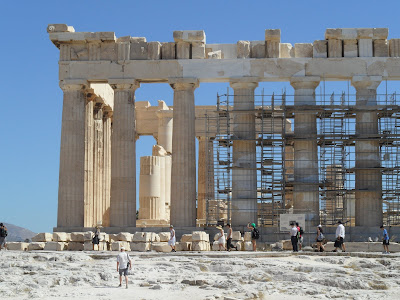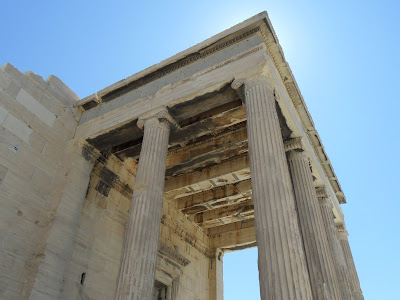 |
| The town of Kotor disappearing into the depths |
Nothing beats dragging yourself up a particularly nasty mountain every now and then. It's bad news for your daily average
—you might only cover a third of the usual distance
—but it's the shortest road to a profound sense of accomplishment.
First you are down there, no more than a lazy bugger among other lazy buggers. You pore over the map and carefully consider the serpentine road snaking its way up to a mountain pass. You know what you are in for. Then you are off. Initially, the road goes up gently. No mountain wants to scare off intrepid cyclists in the first few metres. Everything is going smoothly. You feel how your muscles tighten and relax, tighten and relax. Your breathing is deep and stable. Your legs are like the pistons of an engine. Body and bike are one.
But just when you start feeling smug, thinking that this mountain would never rate as a four-star col in the Tour de France, let alone
hors catégorie, the mountain cranks it up a notch. You try to take that first punch like a man, losing speed but gaining determination. However, you know things are getting serious when your eyebrows get saturated and the sweat runs straight into your eyes. When you want to shift to a lighter gear and realise there
is no lighter gear. When even a three-legged dog would have no difficulty keeping up with you.
 |
| Nice place for a mausoleum |
Somehow you always make it to the top. There might be a neat little sign giving you the altitude and the name of the beast you have just slain. You prop your bike up against the sign and take a snapshot for the grandchildren. Often, there is nothing at all to mark your achievement. You realise you have made it when the road stops going up and starts going down.
My most recent conquest is Mount Lovćen, the
monte negro that gives Montenegro its name. At least, I thought I was working my way up to the top of Mount Lovćen, but the road mysteriously ended just below the summit of Jezerski Vrh (1657 m), the second-highest peak of Lovćen National Park. Still, I got plenty of exercise, which was exactly what I needed after two days of idleness in the obscenely picturesque walled town of Dubrovnik.
 |
| Petrović Njegoš dozing off |
Moreover, there was a nice reward waiting for me at the top of Jezerski Vrh. Not just a silly sign but an entire mausoleum, dedicated to a nineteenth-century Montenegrin hero I had never heard of before. This Petar II Petrović Njegoš must have been an important chap in his days, for someone had taken the trouble to carve a 28-ton likeness from a single block of black granite, not to mention the 461 steps leading up to this monstrosity. Cradled in the wings of an eagle, about to doze off, this Petrović Njegoš struck me as someone who had just cycled all the way up to the top of a particularly nasty mountain. Looked a bit done in, in my opinion, as if in dire need of a banana. In fact, there was something indescribably yawny about the place. I went out and attempted to admire the stupendous panoramic views of the national park, but I was actually chilled to the bone. It wasn't exactly cold out there, but with the soaking wet cycling gear still clinging to my body, it felt positively arctic.
After a five-minute descent, the first downhill metres of the day, I arrived at the mountain hut I had spotted on the way up. 'Free sleeping for hikers and bikers,' a sign said. Too good to be true, but there it was. I stripped the wet gear from my body and did a perfunctory job of washing myself with some cold water I took from a big bottle. At nine, I crawled into my sleeping bag and tried to keep myself warm with my breath. Slowly, the wooden hut turned into a marble mausoleum, the sleeping bag into the wings of an eagle, and I dreamt of reaching dizzying heights, never to come down again.












